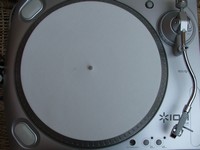
Information on finding the best turntables can be confusing. Any niche or hobbyist community is full of passion for their topic, and turntable lovers are no exception. Forums regularly play host to threads discussing x vs y down to the smallest detail. A lot of it does not matter. Unless you have spent years buying and repairing turntables, and have owned many, you probably will not care about some of the smaller details. Whether or not the finer points make a noticeable difference at all is, in our opinion, also up for debate. However, there are some important factors to consider which you should definitely be aware of to make the right choice for you.
1. Direct Drive Turntables vs Belt Drive Turntables
Direct drive systems have a motor directly underneath the platter that causes it to turn. The big advantage of direct drive systems is that you can start or stop them easily. When a platter is stopped it is far easier to place the stylus in the desired position – for example, at the beginning of a track. The disadvantage of direct drive is that the platters tend to be lighter than with belt drive systems, and consequently the vibration of the platter can cause undesired added noise. Belt drive tables minimise added noise and have better consistency of speed. However, they require the user to place the needle manually when the platter is already spinning. This should not be too much of a deterrent. Belt drive turntables can also be more modifiable. The verdict: in lower to mid price ranges, belt drive turntables are generally better for audio quality, but this is not without exception. High end direct drive turntables, such as the coveted Technics SL-1200, turn out as the best turntables for convenience and sound quality combined. The difference with high end tables are the heavier platter, which minimises added noise. The best turntables for beginners may be direct drive in any price range, as they may find the needle easier to place on the record.
2. Tonearm return
Fully automatic tonearms respond to a start button by positioning above the record and lowering down on to the record surface. Once the side has finished, they return to the resting position. Manual tonearms require placing on the record surface, and when the record is finished they will stay put, tracking around and around until the user lifts it off the record and resets it to its resting position. Auto-return tonearms normally work via a small level allowing the user to slowly lower the turntable needle the last little bit on to the record, and then return to resting position at the end of play. The verdict: Fully automatic tonearms should be avoided, as they involve too many moving parts that can alter the sound of a record. Auto-return tonearms are the best option for people who prefer convenience over pristine audio quality. In our opinion, auto-return tonearms have little effect on fidelity. Strict audiophiles will opt for manual tonearms, as the fewest moving parts results in the least added noise and therefore best audio quality.
3. Adjustable tonearm counterweight
Tonearms on the best turntables have an adjustable counterweight to provide balance against the weight of the cartridge. The verdict: The tonearm must have an adjustable counterweight. If you are to achieve decent racking of the stylus across the record, you must be able to modify the weight. Especially if you are going to change the turntable cartridge, which you should if you own vintage turntables.
4. Platter weight
As previously mentioned, the platters on the best turntables are heavy. If you are buying second hand turntables, then the platter should be able to freely spin. It is one of the two things that really must work for second hand table, as the others can be easily replaced or upgraded (the other is that the tonearm should be able to freely move).
The Final Verdict On Finding The Best Turntables
In the end, what you should be looking for is quality and mostly manual operation rather than automatic. If the turntable is built sturdily (including a heavy platter), has an adjustable counterweight, relies on the user to operate most moving parts and gets good reviews, then buy it! Some people insist on unipivot tonearms and direct drive vintage turntables, but in the end it comes down to personal preference and you’ll need to try and compare before you join a camp. The best turntables are whatever sounds and looks good to you.
